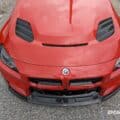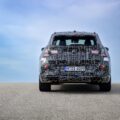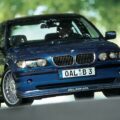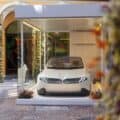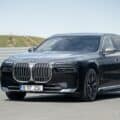Lukas Haag, a student in Transportation Design at the Pforzheim University in Germany worked together with BMW design team on his final thesis. Working with the talented designers in Munich, Haag designed the BMW ConnectedDynamics Concept, a futuristic supercar.
The goal of this project was to create an ambassador for the upcoming “Informatised Age”, or in better words, the Connected World of Cars. Haag says that his project proves that a connected or autonomous car does not have to limit the driving pleasure, on the contrary, it can enhance it.
Some of the traits of this exciting project are the unexpected proportions, iconic silhouette, safety and comfort. Also, some of BMW’s iconic design features have been reinvented, like the simplified kidney grille and L-shaped taillights. The layering approach to design also helped Haag create some exciting and complex surfaces.
BMW ConnectedDynamics, as seen in these sketches, measure 4450 mm in length, 1990 mm in width, 1250 mm height and has a wheelbase of 2.8 meters. Some of the features born from the evolution of digital information in and around the car are:
- Variable seating position – Tail mounted seats can be moved within the cabin, depending on the driving mode – Active self-driving in the sporty setting and a relaxed, upright rear seating position for the fully autonomous mode.
- Tilting technology – Seamlessly integrated, this technology could be used to enhance G-forces in corners and hereby intensify quick weight transfers.
- Full four-wheel-steering – The technical complexity of this feature could be “tamed” by the digital watchdog, therefore enabling the driver to conduct maneuvers never seen before
- The car as driving coach – With the huge flow of collected, the car could truly supervise the driver and give detailed feedback in order to improve driving skills
The student went even further by building a quarter scale clay model was built from scratch which got scanned, then the details were built digitally and adapted to the scan. The see through hard model was first exhibited at the 2014 Pforzheim University summer degree show.
Two of the well-known BMW designers that helped with the project are Michael de Bono and Hussein Al-Attar.
Please take the time to look at the photo gallery below that showcases this project in all its beauty:
[Source: LukasHaag.com]
































